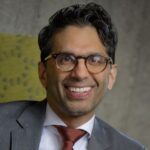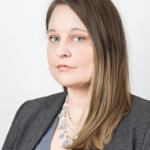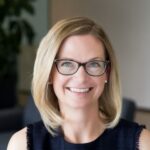(Version française disponble ici.)
J.R. grew up on a cattle farm in southern Alberta. In high school, beyond the demands of her many responsibilities on the farm, she was a top student.
J.R. knew what she wanted to do in life: become a doctor.
But a critical barrier stood in the way. J.R.’s rural high school didn’t offer the necessary pre-med prerequisites to get into medical school.
J.R. was determined to fulfill her dream. But when she submitted her application, all those years of real-life experience delivering calves and managing emergencies on the farm were not considered as equivalent to a summer research placement in a lab.
The root issue is that universities aren’t designed to understand and translate the needs of a diverse community into action. The specific requirements of rural communities are just one of many that universities are failing to address.
Rethinking the role of universities
Complex societal challenges call for all hands-on deck.
The traditional university model has brought about immeasurable benefits over the centuries including cultivating humanity’s most impactful social and scientific innovations. But it has been driven by political and academic elites instead of by communities.
Along the way, we left value on the table by not bringing together all of humanity’s assets to tackle communities’ needs and aspirations. All this against a backdrop of rising polarization that universities have passively mirrored, and at times magnified.
Universities have failed to play their part to safeguard democracy because existing engagements are either too brief, fleeting or bring together the same people again and again.
In an increasingly complex society, this approach is not only out of step, but it deprives all of us from valuable insights, productivity and expertise.
Things don’t have to be this way.
Universities can strengthen democracy head-on by becoming engines of social innovation, convening unlikely collaborators to work on shared goals – even when they disagree on everything else.
From expert to facilitator
A new governance model being used at the University of Calgary Cumming School leaves behind the traditional model widely practiced in academia: experts researching, writing and handing down all the answers.
Instead, the Cumming School has shifted roles – from authority to facilitator. Rather than to simply impart knowledge, its goal is to build trust, connect people and co-create solutions.
This approach rewards listening well and thereby enables groups to work through differences without resorting to the more typical solution of ‘flattening’ what makes us distinct in order to get along and move forward together.
The result is unlocking the power of all communities to participate in shaping their future – and building strong relationships.
In this way, the university builds bridges across communities and helps prevent issues from escalating into crises. Instead of waiting for a social movement to take shape and potentially become disruption, the university becomes a proactive steward of shared wellbeing.
Facilitation to collaboration
In this governance model, to tackle community-driven priorities, a facilitator convenes people from different identities, ideologies, industries and disciplines to better understand and solve the problem.
These may include things such as making it easier for aspiring entrepreneurs to collaborate with cutting edge technology innovators, improving outcomes with and for Indigenous communities, improving access for rural students to higher education, or tackling polarization in our communities.
The job of the facilitator is to guide the group to develop actionable solutions.
The central objective is to collaborate with expertise wherever it resides. That includes lived experience, Indigenous knowledges and cross-sectoral expertise – alongside traditional academic approaches.
Facilitators foster a space where groups that may historically be in conflict can set aside their differences. For instance, religious groups and LGBTQ2S+ communities may collaborate on issues like healthy aging, rural access to services or reducing society’s shrinking common ground.
It begins by setting priorities together
Rather than priorities being set behind closed doors by academics or political interests (as has been the case traditionally), they are shaped through facilitated dialogue with communities.
Communities closest to a problem are brought together with those leaders who make decisions.
Some priorities are immediate in nature. For example, non-profit leaders are looking for executive skill development customized to the challenges they face in their sector.
Other priorities are crosscutting: they may not be any one group’s top concern, but they underlie many others. Political and social polarization, for instance, has potential impacts on productivity, innovation and social cohesion.
Yet, in traditional modes, these kinds of issues often go unaddressed because they are messy and don’t feel urgent.
The pluralistic payoff
Priorities set by listening to communities become our key performance indicators. The result could be a new policy, a product, a service, a research program. Or simply more complete and inclusive insights that guide future decision-making.
But just as important, the process itself teaches people how to work together across differences. The university becomes not just a producer of knowledge, but a platform for relationship building.
Nobody has to agree or abandon deeply held beliefs just to participate. Rather than to increasingly end up as the nexus of polarized ideas and viewpoints, campuses can fulfill their true potential as common ground for sharing ideas and decisions that reflect all facets of the communities they are supposed to represent.
This article is part of a series on inclusive governance. Read more here.














